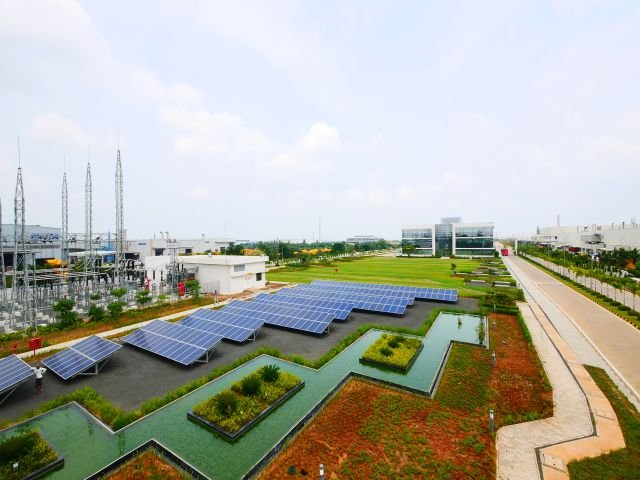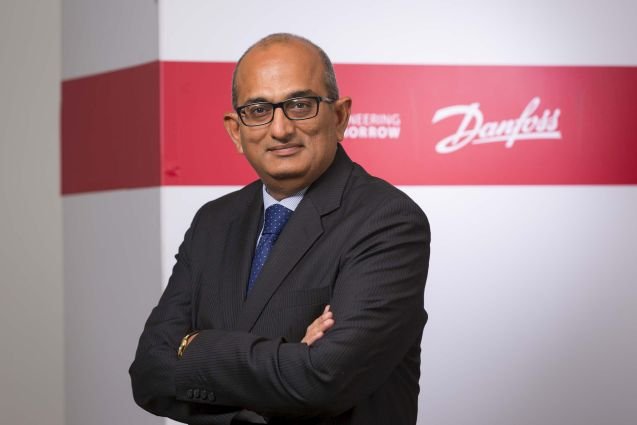Clean Future speaks to Ravichandran Purushothaman, President, Danfoss Industries Private Limited, about how the company’s focus on innovative energy efficient solutions is helping clients reduce carbon footprint while optimizing avenues for growth.
Give us a brief profile of Danfoss India and its core focus areas?
Danfoss Industries Private Limited is focused on climate and energy efficient solutions, and is a 100%-owned subsidiary of Denmark-based Danfoss Group.
We are focused on meeting the growing need for infrastructure, food supply, energy efficiency and climate-friendly solutions with our technologies, finding applications in areas such as refrigeration, air conditioning, heating, motor control and mobile machinery.
We are also active in the field of renewable energy as well as district heating infrastructure for cities and urban communities.
Established in 1998, Danfoss India is headquartered in Chennai with a nation-wide sales and support network comprising 10 offices, a manufacturing unit, R&D centre, and a strong network of channel partners.
Tell us about your range of energy efficient products and the sectors they cater to?
Our product portfolio includes: AC Drives – that offer optimum process control and energy efficiency for a wide variety of electric-motor driven applications, Commercial Compressors – which includes scroll, centrifugal and reciprocating compressors, condensing units and inverter solutions, Industrial components and solutions for monitoring and control of pressure, temperature and fluid control and Silicon Power Modules and Stacks which are designed to meet the exact customer requirements.,
Our products cater to a wide range of industries that seek to employ energy efficient technologies that helps them reduce their monetary and environmental costs with increased operational efficiency.
These include HVAC, Refrigeration, Food and Beverage, Marine and Offshore, Water and waste water management, Lifts and Escalators, Mining and Minerals, Cranes and Hoists and chemical industries.
How important is R&D and technology when it comes to creating quality products for Danfoss India?
R&D is an important aspect of Danfoss’ growth and profitability. At a global level, Danfoss invests over 4.2% of its returns on R&D which has contributed to new ideas and innovations being created today for the problems that may be faced by the industry tomorrow.
Our Oragadam campus houses 4 laboratories that use the latest digital technology, are committed to co-creating energy efficient technologies in partnership with OEM equipment manufacturers and allow our customers to test our products under various conditions.
We are also committed to increasing the speed of innovation which has also led us to partner with new-age companies who have the technologies required to increase competency and in-house Innovation & Entrepreneurship hubs to nurture new ideas from within.
We also organize various hackathons and innovation challenges among employees & engineering students in our various global facilities to ideate and create new technologies, for those markets and the globe.
What are the main challenges posed by the domestic market for energy efficient products?
Market awareness to employ energy efficient technologies is a relatively new concept owing to the lack of understanding of the economic benefits that companies may gain by using such technologies as well as the positive contribution that they could have made to the environment.
However, that trend is slowly changing as industries and individuals are beginning to understand the importance and benefits of using such sustainable technologies.
One of the easiest methods to make industries more efficient and help them optimise productivity with available resources is to equip them with necessary interventions like variable frequency drives that will improve process efficiency, reduce downtime and generate significant energy savings.
How do you assess the impact of the many ongoing government initiatives for sustainable development and clean energy on Danfoss India and the RE market?
We are proud to have been able to collaborate with the Government and other agencies who are actively playing an important role in transforming our country.
The Make in India initiative was a turning point for Danfoss where we set up our Oragadam facility in October 2014, Today, we make more than 10 products in this facility and this product is made in India, for India and the rest of the world.
Post the announcement of the Smart Cities Initiative by the Government, Danfoss has partnered with several architects and designers to explore how energy-efficient innovation can help in making smart cities, smarter, by optimising the consumption of energy and other resources.
Could you share some insights into your global – Climate Strategy 2030 – and its core objectives?
Danfoss is committed to creating a sustainable future that will help our customers reduce their energy footprint by lowering carbon emissions and providing them with a strong return on investment.
In this regard, Danfoss announced its new energy and climate impact targets for its facilities and factories ahead of the COP21 Climate Summit that was held in Paris in 2015.
The core objectives behind this initiative are:
- To reduce energy intensity by 50%, from 24 MWh per USD150,000 sold in 2007 to 12 MWh by 2030.
- Halve the amount of CO2 emissions resultant of Danfoss’ energy consumption. In 2007, Danfoss emitted 705 lbs. of CO2 per 1 MWh of energy. By 2030, this is expected to be a maximum of 352 lbs.
- Aim for energy intensity at Danfoss to drop by 3 percent annually from 2017, and the emissions of CO2 per 1MWh energy by 5 percent.
Tell us about your LEED Platinum rated manufacturing hub at Chennai.
 Danfoss India is acknowledged as the very first LEED Platinum rated constructed manufacturing campus in India. Our Oragadam facility is a green campus which includes a 1MW solar power plant that generates approx 25% of our energy requirements at full capacity.
Danfoss India is acknowledged as the very first LEED Platinum rated constructed manufacturing campus in India. Our Oragadam facility is a green campus which includes a 1MW solar power plant that generates approx 25% of our energy requirements at full capacity.
Our water harvesting facility can convert the rain water collected in ½ hour to an utilisable resource to look after the gardening requirements around the facility which is home to over 4000 trees.
Our facility has also employed a Zero Liquid Discharge (ZLD) Waste Water Treatment, energy efficient fixtures and various other carbon footprint reduction initiatives.
Furthermore, our bio-gas plant which treats around 30 kgs of organic waste on a daily basis is capable of producing enough energy to make over 1000 cups of tea!
Lastly, what is your vision for Danfoss India, three years down the line?
Last year, Danfoss India crossed INR 1000 crore in revenues. Our vision is to maintain a growth of between 18-20% in the coming years and target revenue of INR 2000 crore by 2020 in India!






